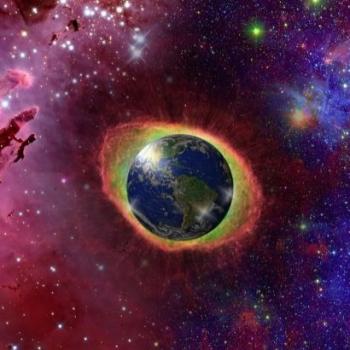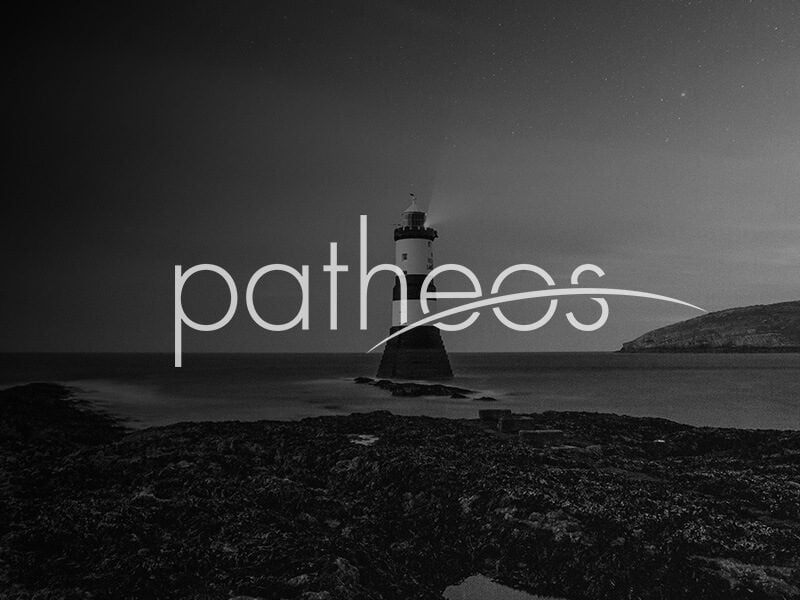Understanding what the actual theology of the classical Gnostics was about depends on understanding what they meant by the Greek term “Paston,” usually translated as “bridal chamber.” In context the term meant a type of experience, not to a physical location, so it is better translated as “sacred marriage,” a term whose connotations are much clearer to us. I have made great use in writing (and, at least once, in a blessed moment in real life) of the fact that, at the moment of uninhibited climax, two people who are absolutely psychically open to each other can experience the merging of personalities, the “making the two into one,” which destroys the illusion that we are totally separate individuals. Beyond that, such an experience can sometimes induce a full Awakening experience, destroying the illusion that we are totally separate from the Divine. So, you see, I am trying to recover (or, true, perhaps invent) a myth that portrays Jesus and Mary as avatars of the Divine Lovers whose sexual joy creates and sustains the existence of our universe, our reality. The prudish, all who suffer from the endemic mental illness I have labeled Aphrodiphobia, will be horrified by such “blasphemy.” No, the blasphemy was the portrayal of Jesus as emasculated and of Mary as a whore. That was surely the sin against the Holy Spirit.
I propose that, upon returning from the “wilderness” after his baptism and Awakening, Jesus knew he had to find his counterpart, the Daughter of the Mother, in order to fulfill the first commandment. I propose that he knew—or perhaps he discovered by accident, as happened with me and Lilith—that he could Awaken her to remember who she truly was, to remember her destiny, by means of the sexual initiation, that is, Awaken her to remember that she is Sophia. There is evidence, fragmentary though it be, that the Marianite Christians believed that was his agenda, and that they knew and used and taught this spiritual technology—and that too is why I now think that Mary, not Peter, probably was his true, authorized successor.
Just as after his baptism and Awakening Jesus knew he was a different person, Mary could have had a similar concept about herself. The later Marianites or their successors apparently codified Jesus’ experience of becoming a different person, a person anointed with authority, as “the Christ descending in the form of a dove and entering into him.” The parallel story about Mary apparently said that Sophia had descended upon and entered into Mary. Looking at the various equations of terminology in the documents, one can see that “Mother,” “Queen,” “Spirit,” and “Wisdom/Sophia” all refer to the same concept, of Mary as embodiment of the creative energy of the Divine, the Mother of All. One key statement is that
A mighty power in Heaven . . . came into the world and was called Mary.
[In blogging, footnotes need to be included in the text, like so. This statement is from Cyril of Jerusalem, as cited by E.A.Wallis Budge, Miscellaneous Coptic Texts, as then cited by Hennecke et al., New Testament Apocrypha, I, 163, where Vielhauer says, “The Holy Spirit {is} the ‘mighty power in heaven’ and Mary is to be understood as the incarnation of the heavenly power.” However, the Mary here is the Magdalene, NOT the BVM. There are many places in both the canonical and the noncanonical scriptures where references to the Magdalene were changed to refer to Jesus’ mother.]
Important evidence that such a story existed consists of Irenaeus’ statements that:
Christ, descending into the world, found his lost sister Sophia, and clothing her with the light, they rejoiced in each other and celebrated the sacred mystery in the [Sacred Marriage] as bridegroom and bride. [1.30.12 , correcting the translation]
Sophia will receive Christ as her spouse . . . that thus a conjunction may be formed between [Jesus] and Sophia [i.e., they shall celebrate the Sacred Marriage]. Jesus and Sophia are the bride and the bridegroom and the [Sacred Marriage] is the fullness of All. [1.7.1]
Irenaeus’ evidence in many ways is quite reliable. Having been educated in rhetoric inRome, he knew better than to create a “straw man” argument. We find confirmation of his summary in various of the Nag Hammadi documents:
Whenever Sophia receives her consort and Jesus receives the Christ . . . then the Pleroma will receive Sophia joyfully and All will be unified. [Val. Expo. 39]
Jesus’s consort is the Great Sophia, who from the first was destined for union with him by the self-Begotten Father. [Sophia of Jesus Christ 228/101]
The Sophia who is childless is the mother of the angels and the companion of the Savior. [Gospel of Philip 63. I am grateful that the late Marvin Meyer pointed out this alternative translation of a key verse in this gospel.]
Sophia is also called Bride, because of the joy of her who gave herself to him in the hope of fruit from the union. . . . Sophia is also called Queen. [Tripartite Tractate 93]
Sophia is a holy Queen and a shining robe. [Teachings of Silvanus 107]
Note that “Queen” may therefore in the gospels refer to Sophia.
Given Sophia as a central character in the myth, it must have begun with the creation, since Proverbs describes how Wisdom, that is, Sophia, was the creative energy that brought all into existence. The dualistic Gnostics, incorporating Platonism, believed that the creation of physical reality, and especially of our physical bodies, was a big, fat mistake. The Marianite Christians and their successors, who were observant Jews, believed, in contrast, that our physical existence is an essential step in our spiritual evolution, a theology rediscovered by some modern churches.
Major fragments of this myth appear in two Coptic documents that rewrite the Adam and Eve story in order to correct its theology; the “Hypostasis of the Archons” [HA] and the “Origin of the World” [OW], which are two different rescensions of an older original. The dualistic stories say that humans were created by angels, who are ignorant, selfish, and hostile to Sophia. When they created Adam, he was senseless and could not walk, but Sophia breathed her Spirit into him—hence all humans are animated by the Spirit of Sophia.
First Begetress Sophia, Mother of the Universe: some call her Love [Sophia of Jesus Christ 231/104]. . . became the womb of everything, for it is she who is prior to them all. [Apoc. James 5]
The will of the Father is always to produce and bear fruit. That Sophia should suffer was not the will of the Father. [Valentinian Exposition 36] . . . [It is] the Father’s will [that] Sophia might bring All into union with the Light. [HA 87]
Sophia stretched forth her finger and introduced Light into matter and pursued it down into the region of chaos. [HA 94] . . . Sophia . . . created great luminous bodies and the stars in the sky to shine upon the earth and render signs of the times and seasons. [OW 112]
Our sister Sophia is she who came down in innocence. . . .She was called Life/Zoe, the Mother of all Living. [Attributed to Jesus in Apoc. James 23]
Sophia sent her daughter Zoe as an instructor in order to make Adam arise. [OW 115] . . . The woman full of the Spirit came and spoke with him, saying, “Adam, arise.” When he saw her, he said, “It is you who have given me life. You will be called the Mother of All Living, for it is she who is my mother.” . . . The woman filled with the Spirit became the instructor and taught them , , , saying, “Your eyes will be opened and you will be like the Gods, recognizing good and evil.” [HA 89-90]
When Adam and Eve became sober, they saw that they were naked and they fell in love with each other. [OW 119]
Here eating the fruit of the tree of Gnosis is not a fall, but an Awakening; that is, Gnosis is the gift that makes sex and love possible. Sobriety is often a synonym for Awakening in the Coptic documents, as in
Be sober and shake off your drunkenness, which is the work of ignorance. [Teachings of. Silvanus 94]
Jesus said: I found them all drunk, and I did not find any of them thirsty. My soul ached for the children of humanity, because they are blind in their hearts and do not see, . . . But now they are drunk. When they shake off their wine, they will change how they think. [Pap. Oxy. 1, 11-22. = Gospel of Thomas 28]
Even the hostility between the angels and Sophia is overcome:
Sabaoth .. . sang songs of praise to Sophia and her daughter Zoe. They caught him up and gave hin charge of the seventh heaven. . . . Sophia placed Zoe on his right to teach him. [HA 95]
I think the preceding establishes a high probability that the Marianites did have such a complete myth. However, in the course of working on this argument, I have realized that an even more compelling argument is provided by the Parable of the Lost Sheep, which I will deal with next.











